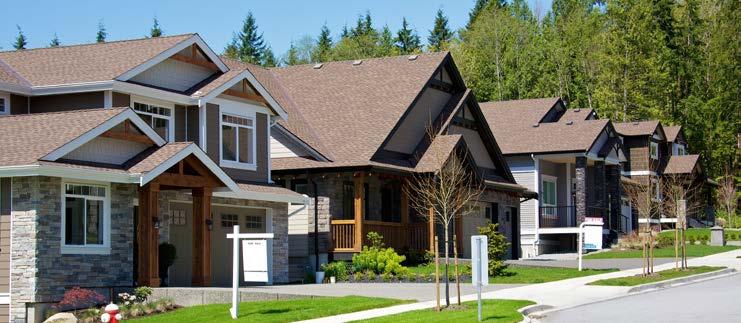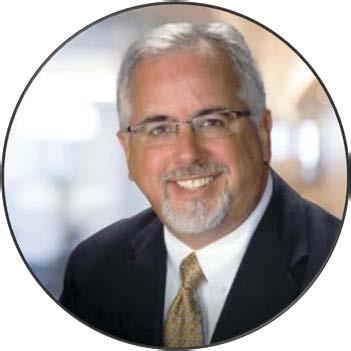
4 minute read
the Future of Our Communities
People on the Move: Climate Change & the Future of Our Communities
KELLY LELANI MAIN
Advertisement
CO-FOUNDER AND EXECUTIVE DIRECTOR OF BUY-IN COMMUNITY PLANNING, INC.
One of the many things the last few years has taught us is that climate change is no longer just a problem for future generations. It is here now and is affecting the lives of millions of Americans in cities, towns, and villages across the country each year.
With each hurricane, wildfire, or flooding event that we see in the headlines, more residents in communities across the country are being forced out of their homes. According to the Internal Displacement Monitoring Center, 1.7 million Americans were displaced by weather-related disasters in 2020 alone. Although coverage of these extreme weather events is growing in the news and in academic journals, there is no single resource for city leaders to better understand how the problem of climate-related displacement and migration trends may impact their community now and in the years to come.
The National League of Cities and Buy-In Community Planning, Inc. has launched a new report, The Next American Migration: What Cities Should Know About Climate Change and Populations on the Move, to provide our local leaders with the information they need to better understand this complicated topic and to proactively plan for the future. The report is the outcome of conversations with a handful of city and local staff across the country who are thinking about the intersection of climate migration with their local planning goals.
Reprinted from National League of Cities, www.nlc.org.
A row of houses for sale reflects a new study that indicates people across America are relocating to escape the threat of growing climate hazards. For cities, these new residents provide both welcome development opportunities and challenges in providing services.
WHAT DID THE RESEARCH UNCOVER?
While many residents are being forced out of their homes due to disasters, people across America are relocating in advance of catastrophes if they can afford to do so. Some cities, like Chico, CA, that are already struggling to handle stressors like a lack of affordable housing, have been hit hard receiving evacuees when disasters strike in nearby communities. Other places, like Cincinnati, OH; Flagstaff, AZ, and the state of Vermont, cite anecdotal evidence that people are moving there to escape the threat of growing climate hazards. These new residents provide both welcome development opportunities as well as challenges in terms of providing services.
Every community in the U.S. is and will continue to be affected by climate change. However, every community has a different history, cultural context, set of resources and capacity to prepare for climate impacts and other stressors. This report provides a simple framework for local leaders to consider what type of city they are living, working, and playing in, and how they can start planning for climate-related risks and demographic changes in their own communities. As part of the research’s proposed framework, cities may identify with one or more of the following categories:
Vulnerable cities: These are typically small and mid-sized cities facing high climate risks (e.g., wildfires, drought, flooding, sea level rise, etc.), but that may still be rapidly growing in light of other factors such as lower taxes, better job markets, or a more desirable climate (such as warmer weather). Portions of these communities will likely need to retreat from high-risk areas such as coasts, forests or floodplains in the coming years or invest in extremely expensive protective infrastructure, which can pose a significant cost burden on local budgets.
Recipient cities: These are communities that are already experiencing social stressors (e.g., housing affordability crisis, severe gridlock, and lack of public transportation, racial or economic inequity, etc.) or even their own share of climate impacts. However, they may also be receiving new residents from neighboring communities severely affected by climate change impacts or extreme weather. These cities may not be large enough to handle an infl ux of new residents and subsequently struggle to provide services for all residents.
Climate destinations: These are cities with relatively lower climate risks (or vulnerability to extreme events like hurricanes and wildfi res) that are actively looking to grow in population. Some destinations may have been designed to handle more residents than live there today and, as a result, may have more affordable housing stock or opportunities to redevelop more sustainably within an existing urban footprint. However, because they may also face their own climate stressors like changing precipitation patterns or need significant fi nancial resources to upgrade their infrastructure, these cities must be actively engaged in building more resilient and equitable communities.
This framework is designed to encapsulate a spectrum of possibilities cities could experience in the coming decades. As a result, some cities may find that Every they embody characteristics community of one or more in the U.S. categories. The framework isn’t a is and will continue prescription, but rather, a guideline to be affected by to help residents, climate change. city staff, elected offi cials and other stakeholders recognize patterns in their own cities that would make it easier to start a conversation around this complex and potentially controversial subject.
A Strong Public Finance Partner in South Dakota
D.A. Davidson & Co. is committed to strengthening the infrastructure and enriching the lives of people in our communities throughout South Dakota and across the nation. Our public finance bankers average over 20 years of experience in conventional fixed-rate debt financing, variable-rate bonds, creditenhanced structures and non-rated bonds.

Gerald J. Spethman, Jr.
Senior Vice President, Public Finance Banker (402) 392-7933 (866) 466-9368
JSpethman@dadco.com
Primary areas of focus include:
• Cities • Counties • School Districts • Rural Water Utility Finance • Healthcare Finance • Lease-Purchase Financing • Nonprofit Entities • Alternative Energy

450 Regency Parkway | Suite 400 | Omaha, NE | dadavidson.com




